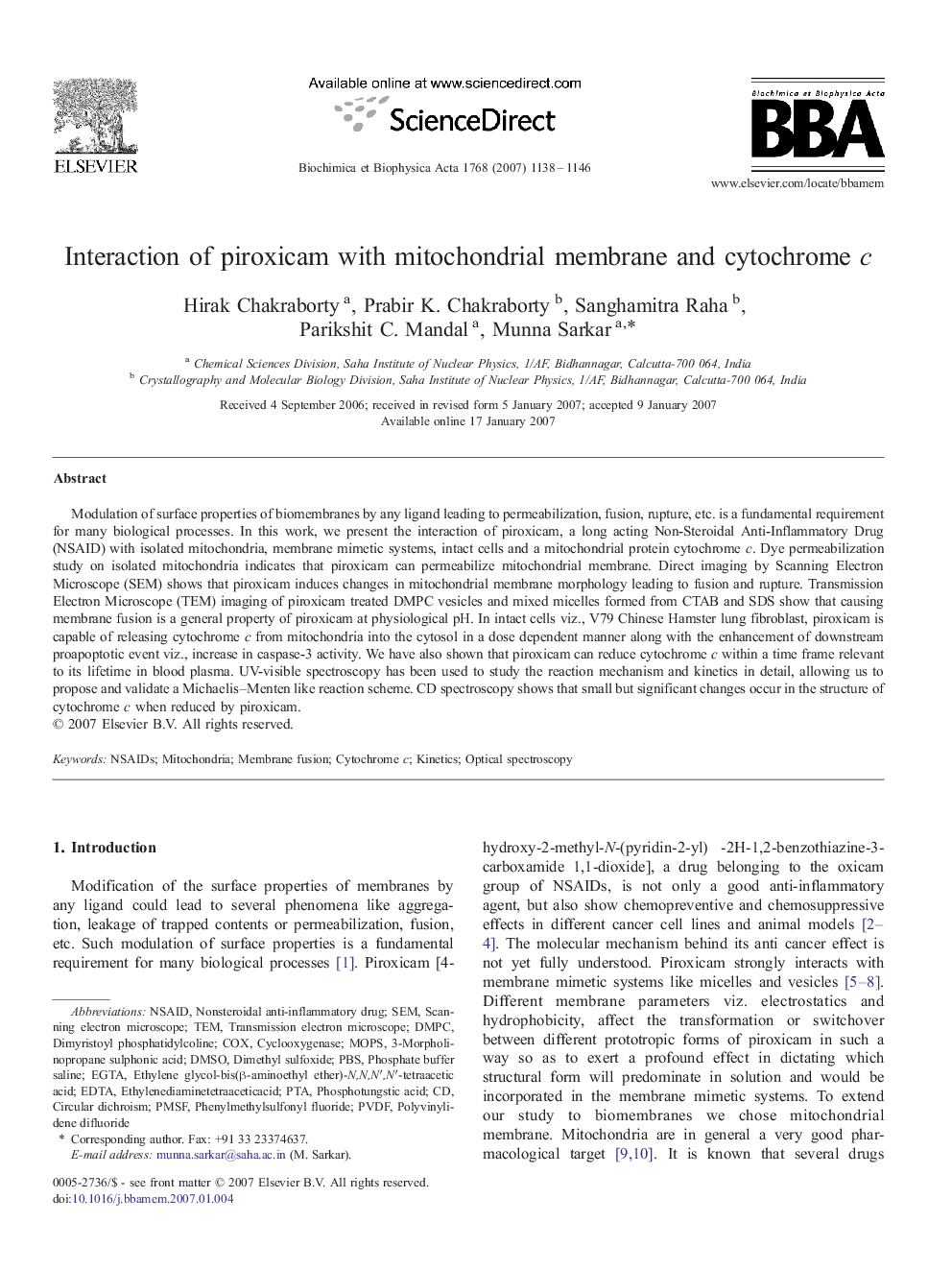| Article ID | Journal | Published Year | Pages | File Type |
|---|---|---|---|---|
| 1945704 | Biochimica et Biophysica Acta (BBA) - Biomembranes | 2007 | 9 Pages |
Modulation of surface properties of biomembranes by any ligand leading to permeabilization, fusion, rupture, etc. is a fundamental requirement for many biological processes. In this work, we present the interaction of piroxicam, a long acting Non-Steroidal Anti-Inflammatory Drug (NSAID) with isolated mitochondria, membrane mimetic systems, intact cells and a mitochondrial protein cytochrome c. Dye permeabilization study on isolated mitochondria indicates that piroxicam can permeabilize mitochondrial membrane. Direct imaging by Scanning Electron Microscope (SEM) shows that piroxicam induces changes in mitochondrial membrane morphology leading to fusion and rupture. Transmission Electron Microscope (TEM) imaging of piroxicam treated DMPC vesicles and mixed micelles formed from CTAB and SDS show that causing membrane fusion is a general property of piroxicam at physiological pH. In intact cells viz., V79 Chinese Hamster lung fibroblast, piroxicam is capable of releasing cytochrome c from mitochondria into the cytosol in a dose dependent manner along with the enhancement of downstream proapoptotic event viz., increase in caspase-3 activity. We have also shown that piroxicam can reduce cytochrome c within a time frame relevant to its lifetime in blood plasma. UV-visible spectroscopy has been used to study the reaction mechanism and kinetics in detail, allowing us to propose and validate a Michaelis–Menten like reaction scheme. CD spectroscopy shows that small but significant changes occur in the structure of cytochrome c when reduced by piroxicam.
